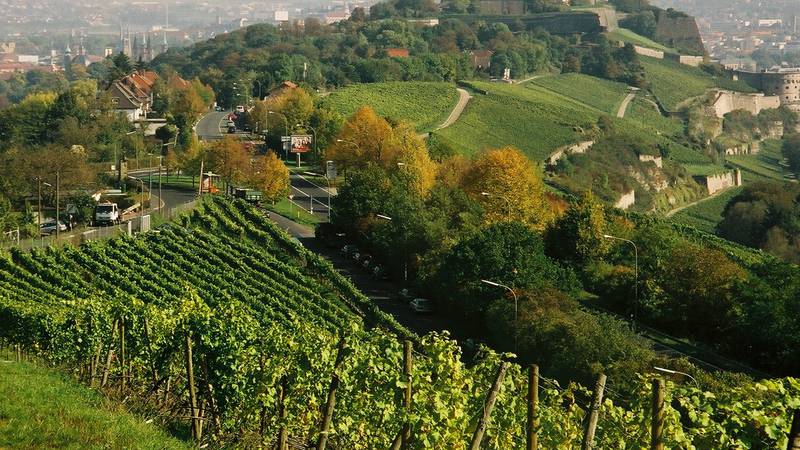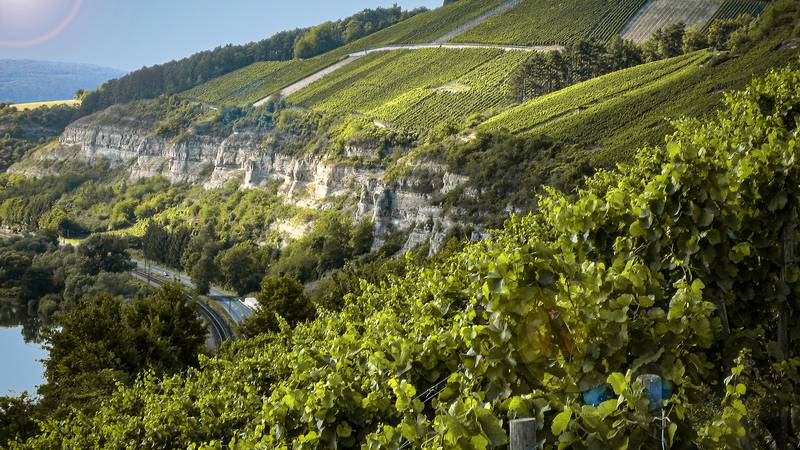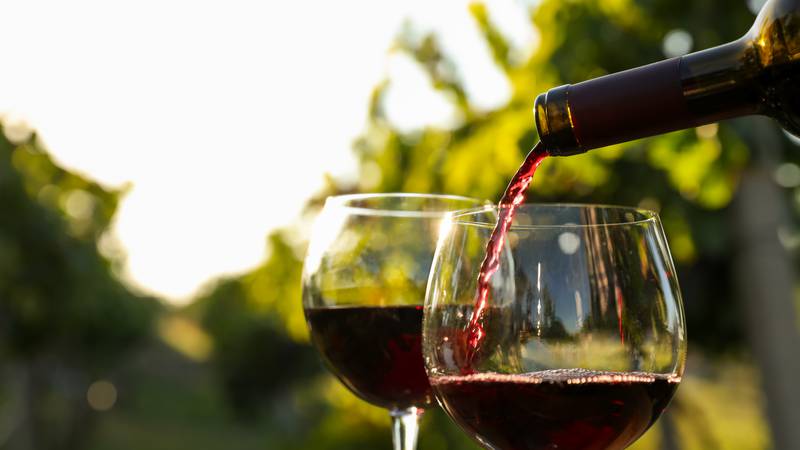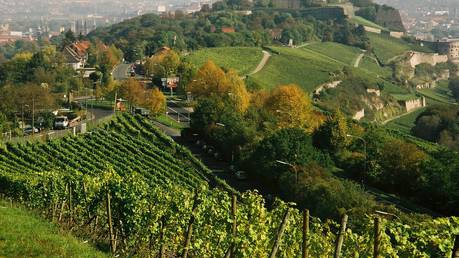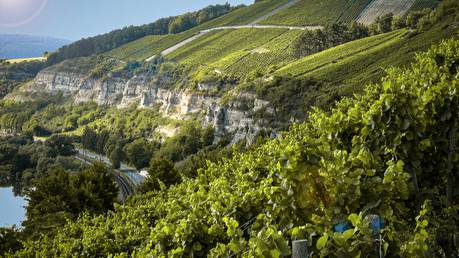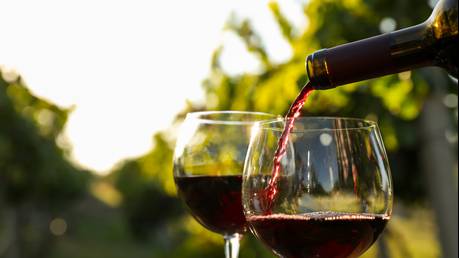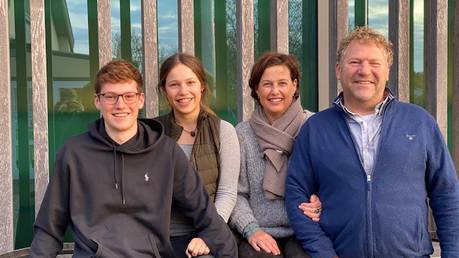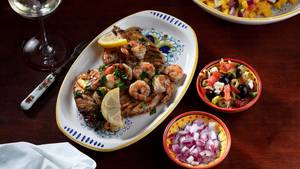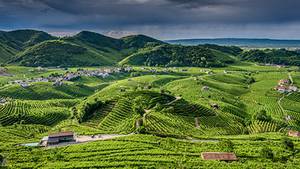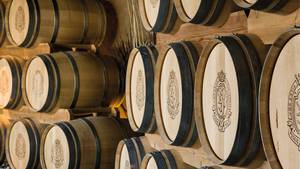The black, red and yellow of Germany’s flag share equal standing, as they always have, but the same cannot be said of the colour palate of its wine industry. Once uber-dominated by white wines, the industry is increasingly focusing on rosé and red wines. Leading the charge is Pinot Noir, locally also known as Spätburgunder, a grape that has well-established roots in Germany, but over the last few decades has reached globally significant acreage. In fact, by 2006 Germany ranked third in total Pinot Noir acreage, only trailing the grape’s ancestral home of France and the United States and continues to grow significantly more than New World countries such as New Zealand and Chile who Canadian consumers are more likely to associate with Pinot Noir.
It's not always been a bed of roses or rosés, for that matter, for Pinot Noir in Germany, although there is an increasing amount of purpose made dry-style pink Pinot Noir wines emerging from Germany to satiate a market thirsty for Provençale style rosé. While plantings existed in the 1950s, they were largely ridiculed, as evidenced by Frank Schoonmakers 1957 account (Oldbourne Press, London) which described them as “an oddity called Weissherbst hardly merits great respect and esteem,” while red Spätburgunder wines “at their summit of excellence, are like rather light and common wines from one of the less famous communes of the Côte d’Or.” 1980s and 1990s versions of Pinot Noir often had an unmistakable sweetness, and distinctive new oak spice, that often placed German Pinot Noir in a less favourable light amongst critics compared to Burgundian and California counterparts. The brave vintners that crafted drier wines using Burgundian techniques were the exception not the rule. Robert Parker (Wine Buyer’s Guide 6th Ed., Simon & Schuster, New York, 2002) described German Pinot Noir as “…a grotesque and ghastly wine that tastes akin to a defective, sweet, faded, diluted red Burgundy from an incompetent producer…” Antonia Knoll of Franken’s Weingut Am Stein agrees there was a need to change from previous use of oak. She says "a more delicate oak regime is for sure another factor positively contributing (to Pinot Noir’s evolution). In pursuit of balance producers and at the same time many tonneliers have developed a more elegant approach when it comes down to the use of oak. Caucasian oak for example is a very efficient way of reducing the impact of aromatic compounds on the finished wine, acting with less tannins, lactones, and catechic acid.”
Joachim Heger, of Weingut Heger "the previously metioned factors are key factors. Regarding the field management, in our case, canopy management is very important, too. It affects the water and nutrient management of a vine. Furthermore we consider completely different quality parameters today, than we did in the past. Pinot noir requires perfectly ripe grapes, not overripe ones. In the past, the degrees oechsle were main determinants for the quality and the picking. Nowadays the importance of analytical values is higher, the pH value for example. In addition the flavour of the berries and seeds are fundamental for the time of picking (that became much earlier in the past years), the treatment in the cellar and the vinification."
As the 1980s became the 1990s, a wave of new knowledge was driving German Pinot Noir forward, albeit if as an undercurrent of quality. Better clones, often looser bunches more resistant to botrytis, some of which were Burgundian and other selections of older, low yielding German ones were part of the success as was better knowledge of how to work with Pinot Noir in the vineyard. Knoll says, “clonal selection does play a pivotal role in general when it comes down to “quality”! But even more so when we talk about Pinot noir. In my opinion there is no variety, that is such dependent on the right clones (ATVB selections) than Pinot. If you don`t have excellent clonal selection it`s as desperate as competing in a Formula one circuit with a FIAT 500.”
Quality minded vintners were also learning to reduce crops. Considering the 1960s and 1970s doctrine of Germany’s wine industry was largely focused on maximizing volume, the idea of green harvesting might have been seen as revolutionary or more critically as foolish by the standards of the day. The lessons these enterprising, dare we say brave vintners learned, are now carried out by their children and in some cases grandchildren who have grown up without the sweet cloud of Liebfraumilch influencing consumer perceptions. The result is now some of the best Pinots in the world. Perhaps a parallel benefit was the rising popularity amongst German consumers for drier wines. Soon the words Baden, Pfazl or Ahr Spätbürgunder would have a similar caché to Mosel and Rheingau Riesling. The German consumer fell in love with dry Pinot Noir, and with prestige came a massive internal demand for Pinot Noir. Germany still struggles to produce enough to share on a global market, but the industry is seeking to place emphasis on its red wine production to external market, just learning that there Germany isn’t limited to Riesling.
As for the German Pinot Noir style. It is a little hard to define. The French have long confined Pinot Noir to definable terroirs, whether it be cooler slopes or an unwavering allegiance to limestone soils. That allegiance has provided France very strict style standards. The German industry conversely has loosened its grip of such tight terroir definitions, which by most accounts provides German vintners more opportunity to craft distinctive, unique Pinot Noir reflective of the wineries individual terroir. While climate change is never to be seen as a positive for any industry, Knoll says “in Germany, for a long time, we have been profiting a lot from warmer temperatures. As critical as climate change must be seen and fought against…it has helped the wine industry in gaining a much more precise profile concerning Pinot noir. “There is no doubt that increasingly warm summers are providing German winemakers in a number of regions, growing vines on a variety of soil type the opportunity to craft Pinot Noir with every chance of success. This culmination of factors has given rise to a German Pinot Noir revolution, one that is linked to premium quality, the enthusiasm of vintners and consumers alike and want and willingness to express the multitude of soils and climates that make up the German vineyard tapestry.
While vintners plant Pinot Noir on a variety of soils, Knoll says “I think limestone soils – their Pinot Noir vineyards are planted on limestone - seem to be the natural habitat of Pinot noir and definitely one of the no brainer decisions when planting Pinot noir. Burgundy as a role model clearly shows us that this is a perfect match. On the other hand, there is so much great terroir out there with the volcanic soils of the Baden region or red sandstone in the Palatinate with great producers excelling with their Pinots!” Heger conquers says "the first planting of Spätburgurnder in Germany dates back to 884. Today it is the most cultivated red wine grape variety in Germany, and the area is constantly growing. Baden is the warmest German wine-growing region, and Pinot Noir is one of the traditional noble grape varieties since a long time. Our soils at Ihringer Winklerberg and Achkarrer Schlossberg, are characterized by volcanic rocks and loess soils, both very calcareous. These sites have been known for generations for expressive wines from pinot varieties. As the sides are mostly planted with pinot varities this desicition has been made decades ago and also proves the French opinion on the influence of calcareous soils." Of the variety of soils Heger says "this is the special thing about german Spätburgunder. Each region represents a certain characteristic. This is decisive for the typicity of a Spätburgunder and therefore represents a certain profile."
It seems even in Germany the Pinot Noir terroir debate is alive and well.

